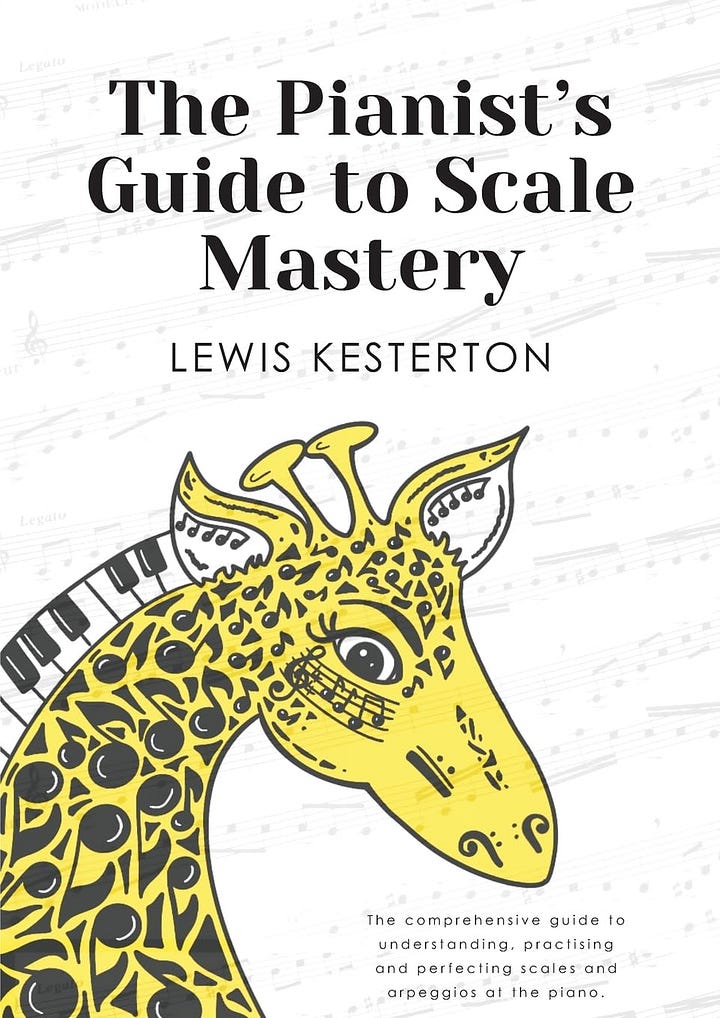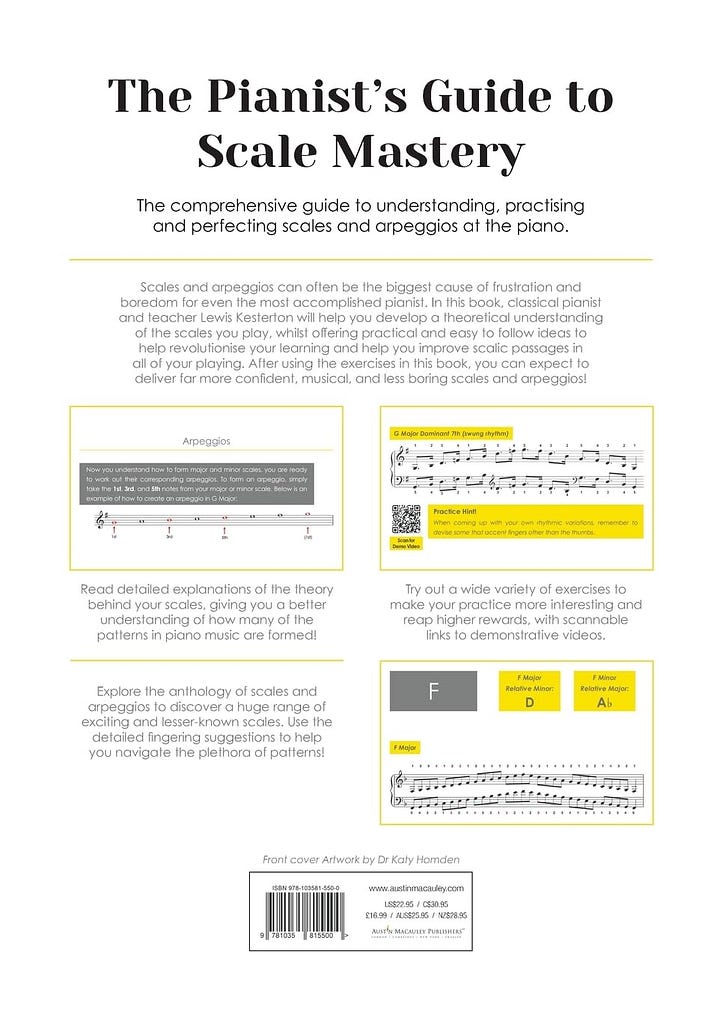Scales: the creative foundation
Teaching scales imaginatively sets your student up for a creative life
This week I’ve been reading Lewis Kesterton’s new book The Pianist’s Guide to Scale Mastery. It’s an unusual scale book, but in a good way.
Instead of simply printing a load of notation, as many scale books do, it:
explains the theory behind the various different scales
gives tonnes of creative suggestions for how to practice them
features a much wider variety of scales than most books: major, harmonic minor, melodic minor, chromatic, arpeggios, dominant 7ths, diminished 7ths, whole-tone, octatonics and pentatonics are all there.
I’m writing about it on PianoCreativity because I particularly like the practice section. It’s really imaginative: there are ideas there that I hadn’t thought about, and I’ve been trying to teach scales creatively for years! I can imagine using it with quite a lot of my students, especially older teenagers and adults.


What I like most about The Pianist’s Guide to Scale Mastery is that it encourages students to experiment. This is great because scales are fundamental to creativity. They underlie so much of what we do; they ensure that our music harmonises and that our hands know where to move. With that in mind, here are some other favourite resources for teaching scales creatively:
Piano Adventures Scales and Chord Books by Randall Faber
Book 1 of this series is so good that I devoted one of my very first posts to it. It’s such a great resource for introducing children to improvisation.
Book 2 is pretty good too but I really recommend Book 3, which works really well for late-intermediate and early-advanced students. Theory terms are clearly explained throughout the series. All books contain lots of creative activities: whereas book 1 focuses more on improvisation, books 2 and 3 tend to focus more on transposition. They’re competitively priced and offer good value for money so I highly recommend getting all three.
Scales Bootcamp by Philip Johnston
This book is a guide to playing scales in hundreds of different ways, presenting them in a slightly gamified form. The Twists are particularly creative and excellent. A couple of my teenage students have gone absolutely crazy for Scales Bootcamp — I’ve never seen students so enthusiastic to practise scales!
What I particularly like is that there’s an underlying creative message to the book: “Look at all the different ways you can play these!” and that has the subtext “Think about all the creative ways you could play your repertoire!”
A couple of minor caveats: only majors and harmonic minors are included (no natural or melodics, no modes) and the most recent edition of the book doesn’t include any notation, just fingering diagrams, so I like to pair it with a book where the scales are notated. However, don’t let that put you off: this is a real winner.
Smart Scales by Diane Hidy
This is a lovely resource for late elementary and intermediate students. On the face of it, it’s just a set of student-teacher duets, where the student part is based on the scale fingerings, but each duet is so expressive and lovely, it’s easy to fall in love with them. It’s a great way for your student to practise reading, get really familiar with fingering patterns, and practise ensemble playing. There are currently three sets available—white key majors, white key minors, black key majors—and the black key minors are coming soon.
Minor caveat: the student isn’t actively being creative here, beyond playing expressively, but they are such a lovely transformation of “boring” scales, that they’ll inspire your students.
Not Just Another Scale Book by Mike Springer
These are three books of solo repertoire where scales are embedded into the music. The pieces are really musical and lots of fun to play. Almost all of my students have chosen to learn the piece for C major, “Boogie Woogie Rock”. You just have to play it to them once and they instantly fall in love. Here it is:
“Winding River”, the piece for B flat major, is another very popular choice from the first book:
Like with Smart Scales, the student doesn’t do any actual creativity, but the pieces are so lovely, they’re a great source of inspiration.
ABRSM Jazz Piano Pieces
Each piece in these books always has a full notated “head” section (the main melody) followed by a space to improvise with scale suggestions given. There’s a lovely mix of classic and contemporary pieces and many of the pieces are really fun or very beautiful. They have been popular in my studio with students of all ages. Here are a couple of my favourites from the Grade 2 book.
The Orchard by Pete Churchill is really gorgeous. Here’s a lovely recording by William Binden. The improvisation starts at 0:50.
Here’s a kid called Jed having a good time playing Hard Science by Phil Peskett. He starts improvising at 0:25. Nice one, Jed.
What about you? How do you get your students engaged with scales? What ideas do you have to make scales creative? Leave a comment or email me at hello@pianocreativity.com.



